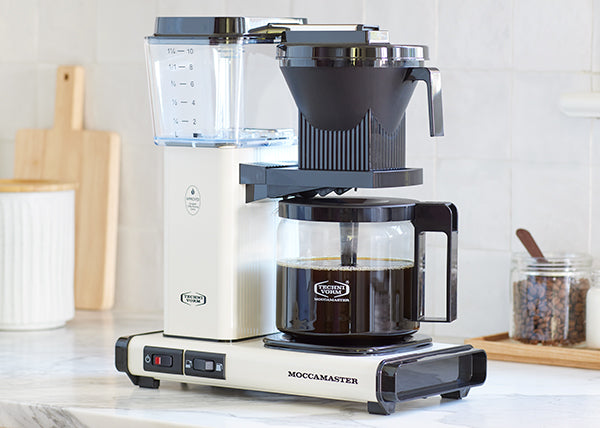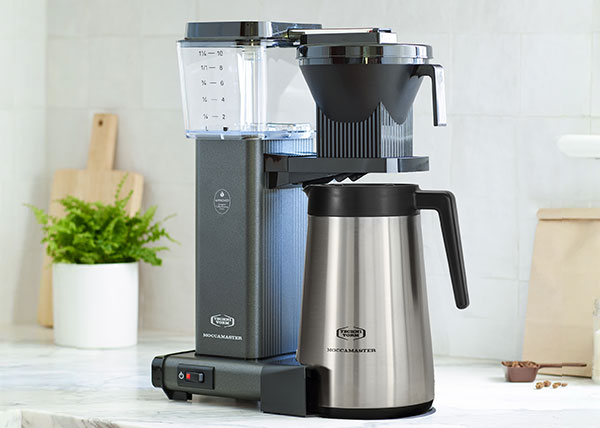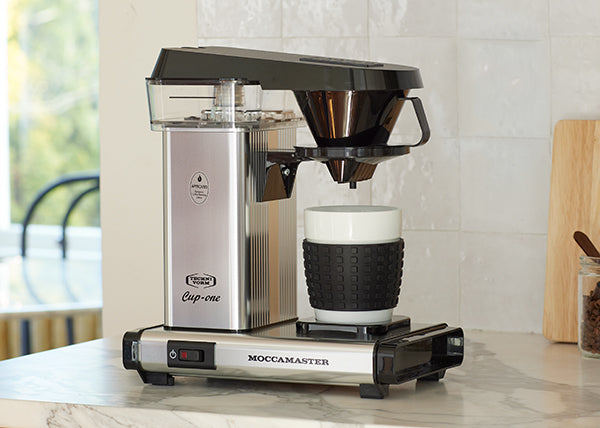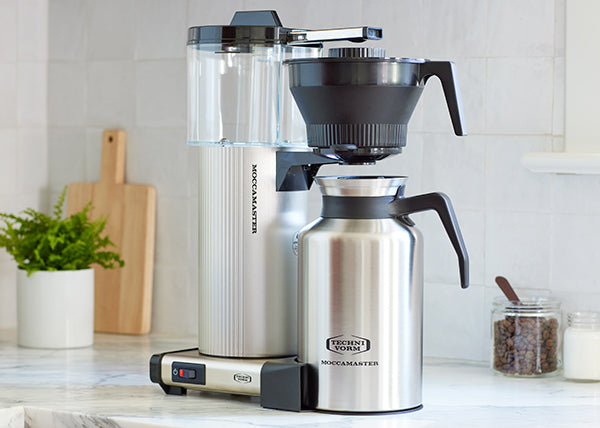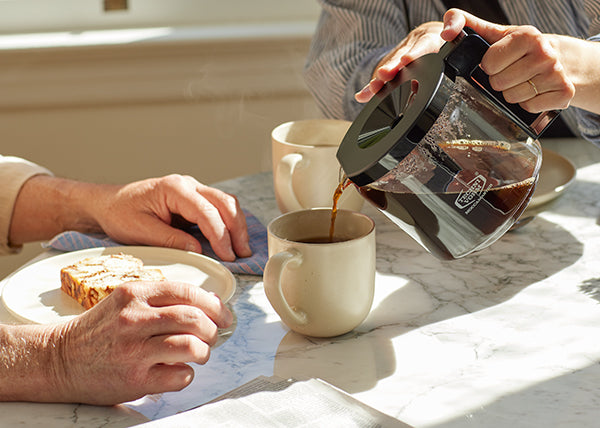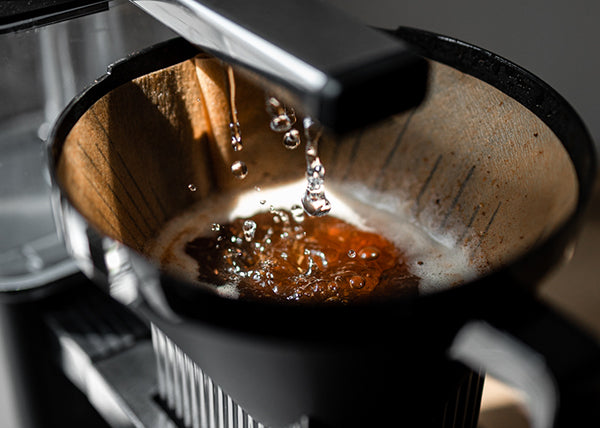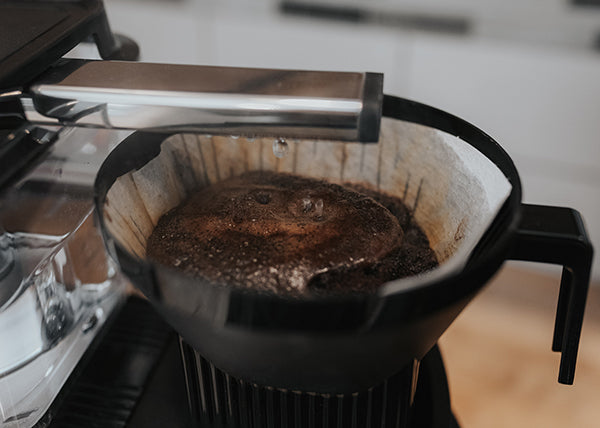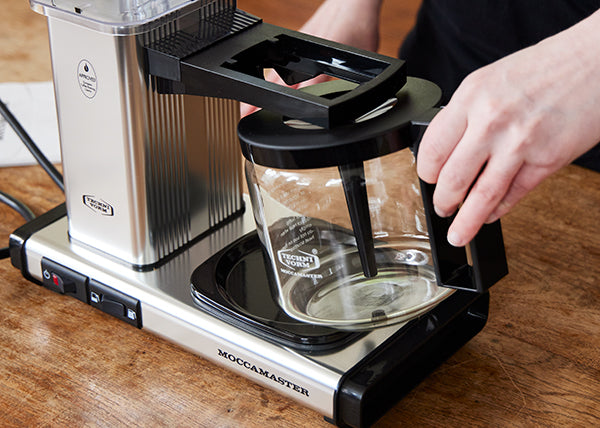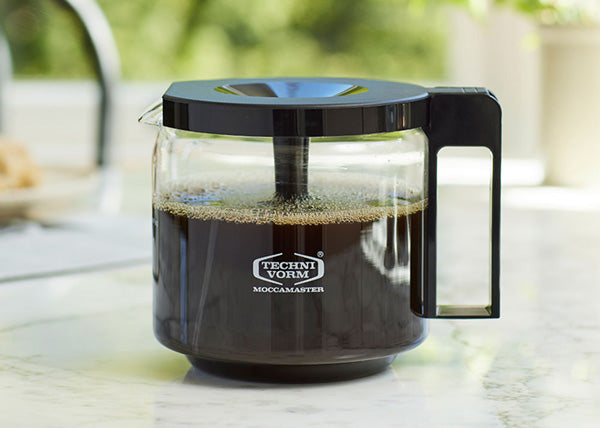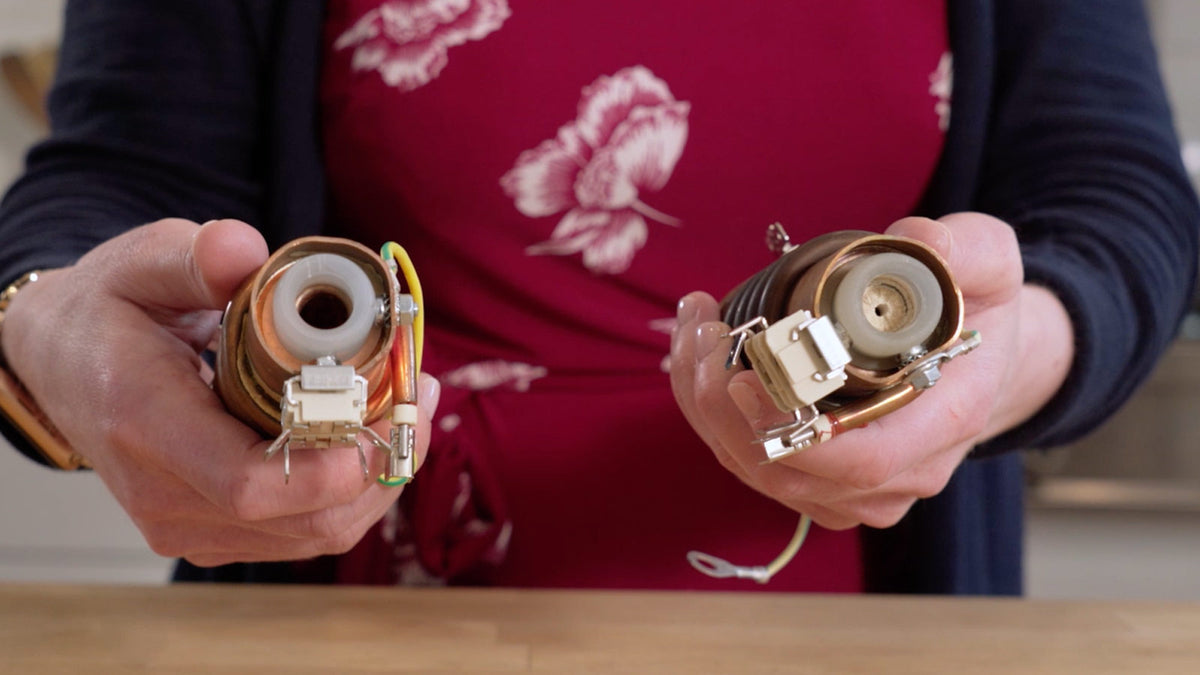Over time, minerals in your water accumulate inside your Moccamaster’s boiling element, forming scale. This buildup can slow and eventually stop the flow of water. It can also affect your brewing temperature and saturation time. If your brewer has a lot of scale buildup, you might notice that it’s taking longer and longer to brew, and the coffee doesn’t taste as good or get as hot as it once did. If you don’t descale regularly, your brewer can become permanently damaged. We recommend using Urnex Dezcal orBioCaf Descaling Powders.
We don’t recommend using vinegar to descale; it’s not strong enough to break down mineral buildup. In addition, it can leave a lingering odor and aftertaste in your future brews.

What does scale buildup look like?
The copper boiling element is the heart of the Moccamaster. Here are two different elements side-by-side. The one on the left has no scale buildup – the center is clear and open. In the boiling element on the right, you can see how the scale has severely built up to the point that water can barely pass through. We recommend descaling your brewer around every 100 brews, or whenever you come to the end of a box of filters. However, if you live in an area with harder water, scale will build up quicker, and you’ll want to descale more frequently.

Step 1: Dissolve the descaling powder into 32 ounces of warm water in a separate container.

Dissolve the powder into the water. Always use a separate container for this step, and make sure you stir well to dissolve all the powder. Do not add the powder directly to your water reservoir – you risk clogging your heating element. Never put hot water in your brewer. If you use hot water to dissolve the powder, wait until it cools to pour into your machine.
Step 2: Pour the solution into the water reservoir.

Once the powder is dissolved, add the solution to your water reservoir.
If you own a Cup-One coffee brewer, you'll still use the full amount of descaling powder and water – simply pour it through in stages until it’s gone.
Step 3: Run the brew cycle.

Run the brew cycle as if you were brewing coffee— you do not need to add a filter to your brew basket.
Step 4: Discard the solution from the carafe.

Once the cycle is complete, discard the solution in your carafe.
Step 5: Rinse the brewer by running three cycles of clean water through it.
You’ll do this to fully rinse the solution and complete your process.
Watch our full cleaning and descaling video here, and find the supplies you need below!


